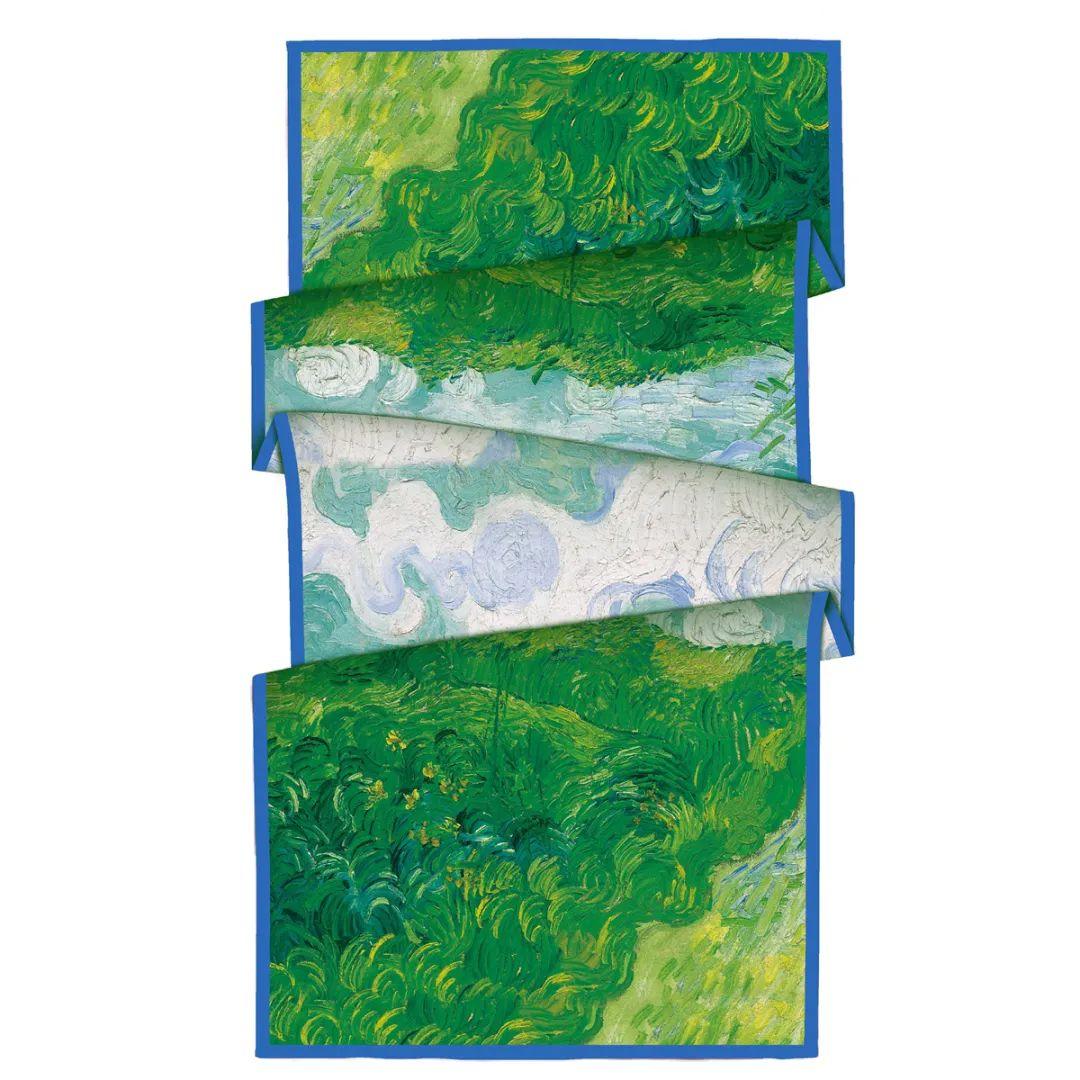
Dunhuang flying maid silk scarf, is an indispensable part of the flying image, it is not only the decoration of the dress, but also a key element of the flying in the mural to show the sense of animation and floating. The following is a detailed explanation of the silk scarf in Dunhuang Flying Maiden:

I. The Art of Silk Scarves
Diverse forms: the silk scarf in the Flying Maiden picture has different forms, some fluttering in the wind, some around the Flying Maiden, and some gently lifting the scattered lotus and other items, showing a rich dynamic sense of beauty.

Rich colors: silk scarves in a variety of colors, such as red, green, blue and other bright colors, these colors and the flying maid's clothing and the overall tone of the mural in harmony, enhancing the visual effect

Material lightness: as can be seen from the mural, the material of the silk scarf is depicted as very light, as if it can really float with the wind, which further enhances the flying maid's sense of agility and ease.

Second, the cultural significance of the silk scarf
Symbolizing the flying of the flying sky: the silk scarf, as an important element in the picture of the flying maid, symbolizes the flying ability of the flying sky. It flutters with the wind, guiding Feitian to soar freely in the air, showing Feitian's extraordinary qualities.

Reflecting the aesthetics of the Tang Dynasty: Dunhuang's flying maids were mainly painted in the Tang Dynasty, a period when aesthetic concepts favored richness and splendor. The lightness and flow of silk scarves echoed the softness and gracefulness of Tang women, and together they constituted an important feature of Tang aesthetics.
Fusion of Chinese and Western cultures: The Dunhuang Flying Maiden is a product of the exchange of Chinese and Western cultures, and the elements of the silk scarf are also a fusion of Chinese and Western cultures. It embodies the pursuit of light and airy beauty in traditional Chinese culture, and absorbs certain features of the flying sky image in Indian Buddhist art.

Third, specific examples
In Dunhuang Mogao Grottoes in a number of caves, can be seen in the figure of flying maids. For example, the 57th cave in the flying maids bent over hovering, the left hand gently hold up the scattered lotus, around the two arms between the ribbon in the wind fluttering; the 321st and 329th caves in the flying maids are naked, wearing beads, arm wearing a ring of treasure, the waist tied skirt, some holding musical instruments singing and dancing, some scattered flowers in the sky at ease, and their scarves are also light and airy, for the whole picture adds unlimited Their silk scarves are also light and flowing, adding infinite vitality and vigor to the whole picture.


